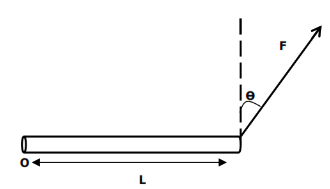Force and Motion UHS MDCAT Past MCQs are important for the upcoming test, if you are preparing yourself to get admission to the University of Health Sciences MBBS/BDS Admission Test MDCAT, so let’s start solving these Force and Motion UHS MDCAT Past MCQs problems by going through this article which I have shared below with the best explanation and solution on these questions. These Force and Motion UHS MDCAT Past MCQs have been explained with images to help you understand better.
Force and Motion UHS MDCAT Past MCQs
{tocify} $title={Table of Contents}
Force and Motion
The topic of Force and Motion, specifically Newton’s Laws of Motion, is common in standardized exams. In the MDCAT exam. As a result, test takers should prepare themselves for the types of questions that might be on the exam by reviewing as many past MCQs as possible.
Understanding the concept of weight.
Weight is the pull of gravity on an object, or in other words, its mass times the acceleration due to gravity. It is usually measured in pounds or kilograms. The force exerted by the weight of an object is determined by its weight. Weight increases with more gravitational pull. As a result, weight also increases as we go deeper into the Earth’s atmosphere. For example, if you weigh 160 lbs on Earth’s surface, your weight would be a little less than 154 lbs at sea level (due to atmospheric pressure).
Center of gravity
The centre of gravity is the balance point for an object. When a force is applied, it has the tendency to push or pull the object so that its centre of gravity will stay in place. Let’s say you are holding a basketball in your hand. If you want to hold on to the ball, you need to keep your arm as close as possible to the ball’s centre of gravity; otherwise, your arm will not be able to counteract all forces that act on the ball and cause it to move.
Moment of force
A force that changes the velocity of an object is called Momentum which is calculated by multiplying the net force exerted on an object by its mass. However, when an object exerts force onto another object, it will change its momentum (unless it’s an inelastic collision). Momentum is conserved when two objects collide in a way that doesn’t involve air resistance or friction.
UHS MDCAT Past MCQs On Force and Motion
Q.1 An elevator is moving upwards with a constant velocity of ‘v’. What is a weight of a person of a mass ‘m’ inside the elevator during upward motion?
A) mg + mv
B) mg
C) mg ― mv
D) zero
Q.2 A simple pendulum length ‘L’ with a bob of mass ‘m’ is slightly displaced from its mean position so that its string makes an angle ‘θ’ with the vertical line as shown in the figure. Then bob of the pendulum is released. What will be the expression of torque with which the bob starts to move towards the mean position?

A) mgL
B) mgL sin θ
C) 0
D) mgL cos θ
Q.3 A force ‘F’ is acting at point ‘P’ of a uniform rod capable to rotate about ‘O’. What is the torque about ‘O’?

A) (OP)(F tanϴ)
B) (OP)(F)
C) (OP)(F sinϴ)
D) (OP)(F cosϴ)
Q.4 An object of mass ‘m’ is suspended in an elevator moving downward with an acceleration equal to the acceleration due to gravity. What is the apparent weight of the object?
A) Zero
C) mg
B) 2mg
D) mg/2
Q.5 The ratio of moment of inertia of two objects ‘A’ and ‘B’ is 2:3. Which one of the following is the ratio of torques of ‘A’ and ‘B’ respectively if both are being rotated with constant angular acceleration?
A) 3:4
B) 2:3
C) 3:2
D) 4:3
Q.6 Due to some mechanical fault, a lift falls freely from the top of a multistory building. Which of the followings is the apparent weight of a man inside the lift, if the mass of the man is 80 kg while value of ‘g’ is 10 ms2?
A) 900 N
B) Zero
C) 800 N
D) 700 N
Q.7 Two forces, 5 N and 10 N are acting at ‘O’ and ‘P’ respectively on a uniform meter rod suspended at the position of the centre of gravity 50 cm mark as shown in the figure.
What is the position of ‘P’ on the metering rod?
A) 80 cm
B) 75 cm
C) 70 cm
D) 65 cm
Q.8 A 100 kg man is standing in an elevator, and he accidentally falls freely. What will be the weight of the person in the freely falling elevator (take g=10 m/s2)
A) 1000 N
B) 10 N
C) 500 N
D) Zero
Q.9 A bar of length ‘L’ pivoted at ‘O’ is acted by a force ‘F’ at an angle ‘ϴ’ with the vertical line as shown in the figure;
What is the moment of force?
A) L sinϴ
B) L cosϴ
C) LF cosϴ
D) LF sinϴ
Q. 10 A body is having a weight of 20 N, when the elevator is descended with a = 0.1 ms2, then the value of tension ‘T’ is:
A) 196 N
B) 19.8 N
C) 1.98 N
D) 2 N
Q.11 A man in an elevator ascending with an acceleration will conclude that his weight is:
A) Increased
B) Decreased
C) Reduced to zero
D) Remain Constant
Q.12 If we double the moment arm the value of torque becomes:
A) Half
B) Three-times
C) Two-times
D) Four-times
ANSWERS:
| QUESTION # | ANSWERS |
|---|
| 1 | B |
| 2 | B |
| 3 | D |
| 4 | A |
| 5 | B |
| 6 | B |
| 7 | B |
| 8 | D |
| 9 | C |
| 10 | C |
| 11 | A |
| 12 | C |







i enjoyed while practicing the mcqs but i will be more better
if we are provided by solved answers as well. because many of students have problem in solving the numaricals.
Thanks for your suggestions.